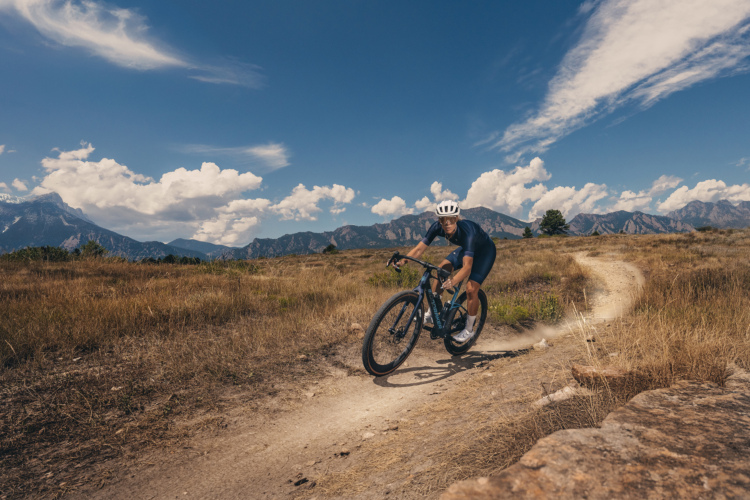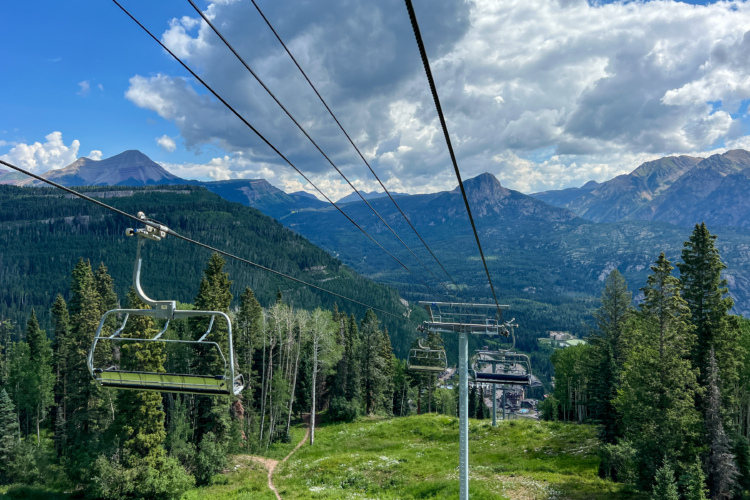
Two weeks after mountain biking 340 miles in the span of three days, my pinkie and ring fingers are still numb. Is this normal, and if so, what can I do to help my body recover? I decided to ask the pros how they recover after long-distance bikepacking; that is, if these super-humans even feel the need to do so following all-out efforts.
All of the athletes I spoke with mentioned that training and bike setup are an important part of avoiding post-ride discomfort and long-term injuries, though clearly it was too late for me on that front.

Sleep
First things first: Sleep is a key part of recovery for everyone immediately following a big effort, though that is often easier said than done.
“Sleeping and resting can be tough at first because my body is beat [and] it can be hard to relax,” says 2015 Tour Divide winner Lael Wilcox. “In extreme cases, marijuana edibles help knock me out to get some sleep.”
Neil Beltchenko won the 2018 Iditarod Trail Invitational 350 and in 2020 became the first-ever, overall unsupported winner of the Arrowhead Ultra. “Maybe the most important thing to me is sleep,” he says. After a 300-mile ride in Kentucky, Beltchenko says it took a week’s worth of good sleep and hydration for him to finally feel recovered.
Kurt Refsnider has won all three events in the Triple Crown of Bikepacking and notes that catching up on sleep after a race may not even go far enough. “[Sleep deprivation] is really hard on our bodies and our brains,” he says. In fact Refsnider says he limits the number of big rides he takes on each year to limit any potential long term impacts a lack of sleep might have.
“It usually takes a week or two for me to really feel recovered,” says Wilcox. “I think the sleep deprivation is probably the worst part.”

Food
Mountain biking for days is likely to leave most riders with a calorie deficit, despite athletes’ best efforts to stay well fueled during the ride. Beltchenko uses his post-ride recovery time to load up on his favorite foods. “I’ll eat lots of food, typically whatever I’m craving.”
Like sleeping after a ride, eating may not come naturally at first. “The couple days after I’m done [I try] to sleep as much as I can [and] eat as much as I can within what my body wants. And sometimes that’s actually forcing it a bit,” says Refsnider. Oftentimes after hot events, he just isn’t hungry.
Many riders rely on non-steroidal anti-inflammatory drugs (NSAIDs) like Tylenol or Advil as a part of their recovery, but FKT record holder and ultra endurance racer Eddie O’Dea likes to choose recovery foods that naturally produce a similar effect. “I generally try to avoid NSAIDs and look for other ways to reduce inflammation via nutrition. Ginger, turmeric, and CBD work well for me.”
Acupunture, nerve flossing, and stretching
Back to my numb fingers. Record-breaking, self-supported ultra biker and 24-hour champion Kait Boyle says she’s experienced the same numbness after big rides. “I’ve had good luck with acupuncture and body work to help nerves recover,” she says. “I’ve had numbness clear up within a couple weeks but I’ve heard of folks having lasting numbness for months.”
O’Dea notes that numb hands are almost always caused by a bad bike fit and/or sub-optimal riding form. Based on a description of my pain he tells me I’ve likely compressed my ulnar nerve. He shared this video with me that explains nerve flossing and includes exercises that so far, seem to help. Both Wilcox and Refsnider say they’ve experienced numb fingers as well.
“While drinking coffee my right hand just slowly started to go numb, like two thirds of the hand,” Refsnider says. “And it got worse and worse and took like probably three weeks before I could put my hand back on the handlebars without aggravating.” He recommends gentle stretching in the first few days after a big ride since muscles are usually too tender for any type of massage.
Both O’Dea and Wilcox say applying topical CBD to sore muscles and joints helps with their recovery. And for those with access to high end recovery tech, O’Dea recommends NormaTec recovery gear and cryo therapies.

Active recovery
Perhaps one of the last things on riders’ minds after getting off the bike is getting back in the saddle right away, and everyone I spoke with made it clear that it’s important to listen to our bodies when it comes to recovery. Engaging in an off-the-bike activity like walking can be a good way to actively recover without aggravating over-use injuries.
“Active recovery like easy/short rides or walks help move blood and reduce inflammation,” O’Dea says.
Beltchenko agrees. “I’ll also go on some relaxed recovery rides to get the blood flowing to help heal the tissue.”
Refsnider suggests planning on a couple of weeks of recovery. “That looks like pretty much taking a week off and then taking it really, really easy, just like recovery spins the second week.”
The big picture
Refsnider notes that the ultra endurance community doesn’t often talk about recovery, and in some cases, seeks to glorify a lack of recovery and jumping right back into training after a big effort. That, along with sleep deprivation, are two things he’d like to see change. “Those are both things that are so important for sustaining ourselves, for being able to do what we like to do for years to come and not burning ourselves out.”
“The best advice is to listen to your body,” O’Dea says. “If it hurts, it’s numb, or it’s fatigued give it more time.”
Wilcox ended her response with a somewhat surprising declaration. “Ultra racing definitely isn’t healthy,” she says. “But it’s amazing to see so much terrain all in one go and see how far you can push your limits.”







0 Comments